Litecraft Three-Ring Fixtures, 1954
I remember being fascinated by the light fixtures that were in my first grade classroom, and when I saw some for sale by The Lighting Lab I simply had to have three for my 1949 GI Bill house. I figured they're just the kind of thing that a young architect would have spent a month's salary on (over his wife's objections) if he owned this house at the time.
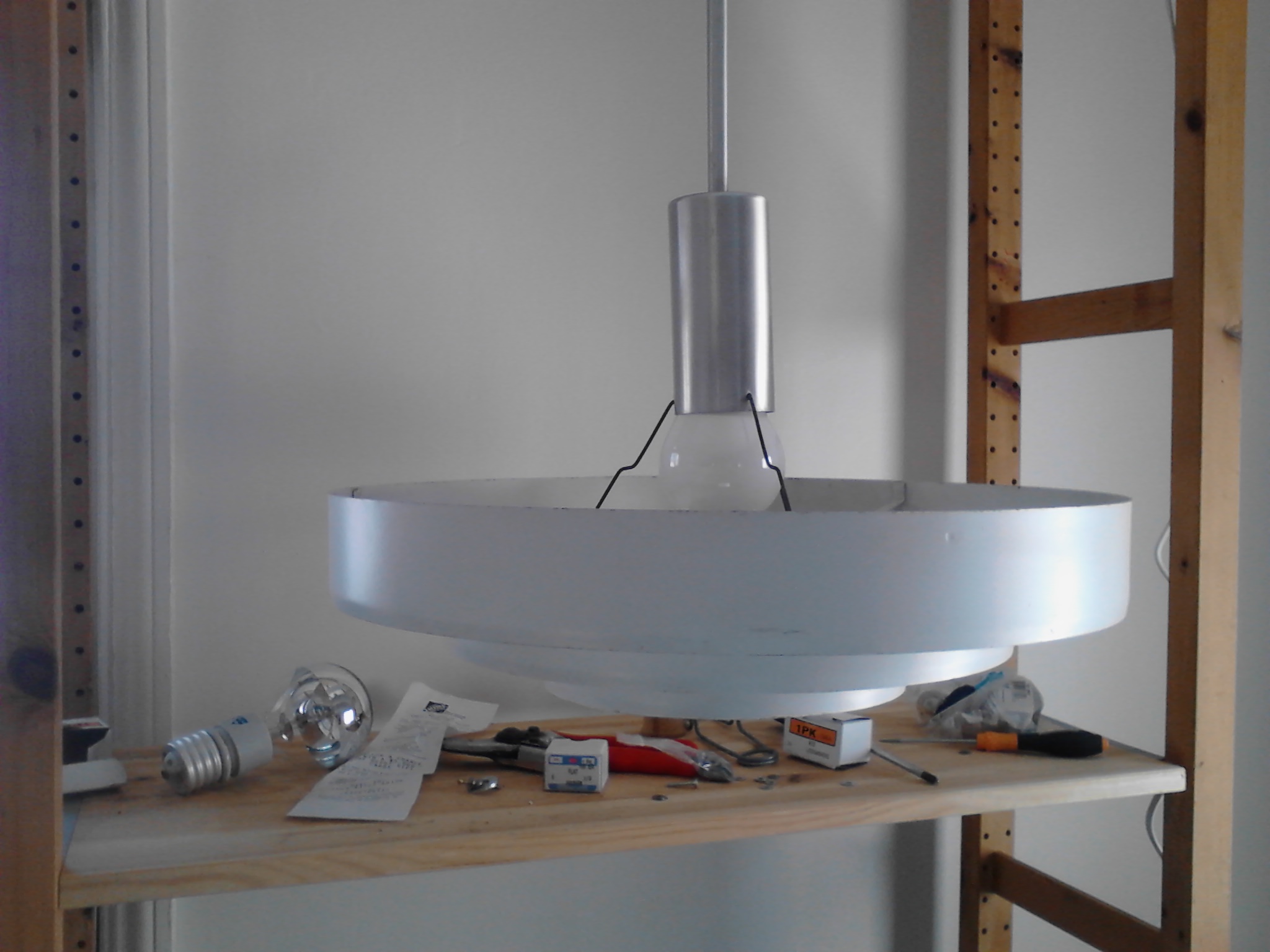
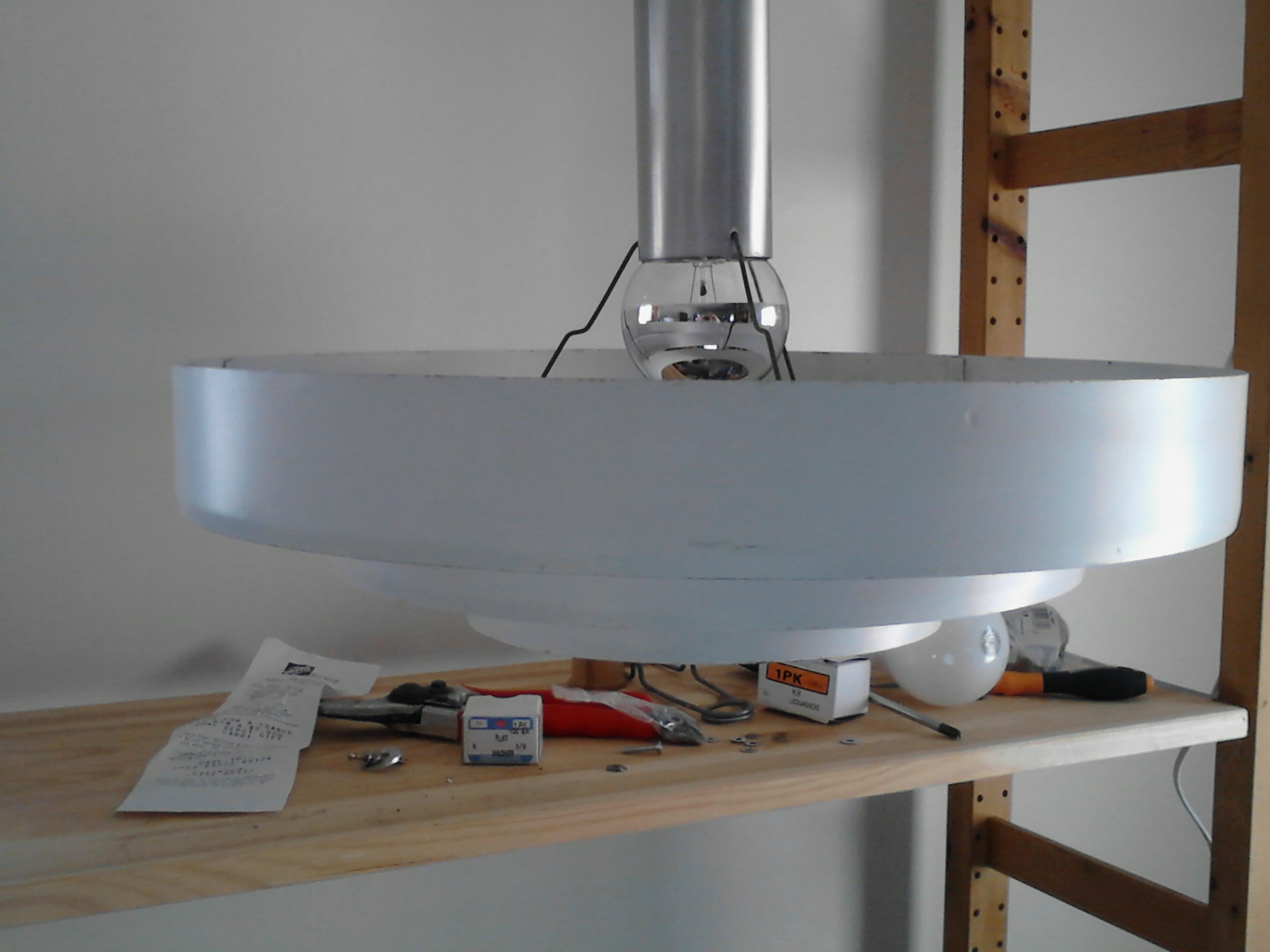
Litecraft fixture with a frosted Mogul lamp for reference (left), and a G25 lamp with a 1.25" socket extension (crown silvered, right). Their visible portions are both approxiamtely the same form. The fixture was designed for a crown silvered Mogul lamp, but these are increasingly difficult to find, so I substituted a crown silvered G25 lamp (which is still being made) and an extension. All photographs below are with the G25 lamp and one or more extensions. (Click on any image to enlarge.)
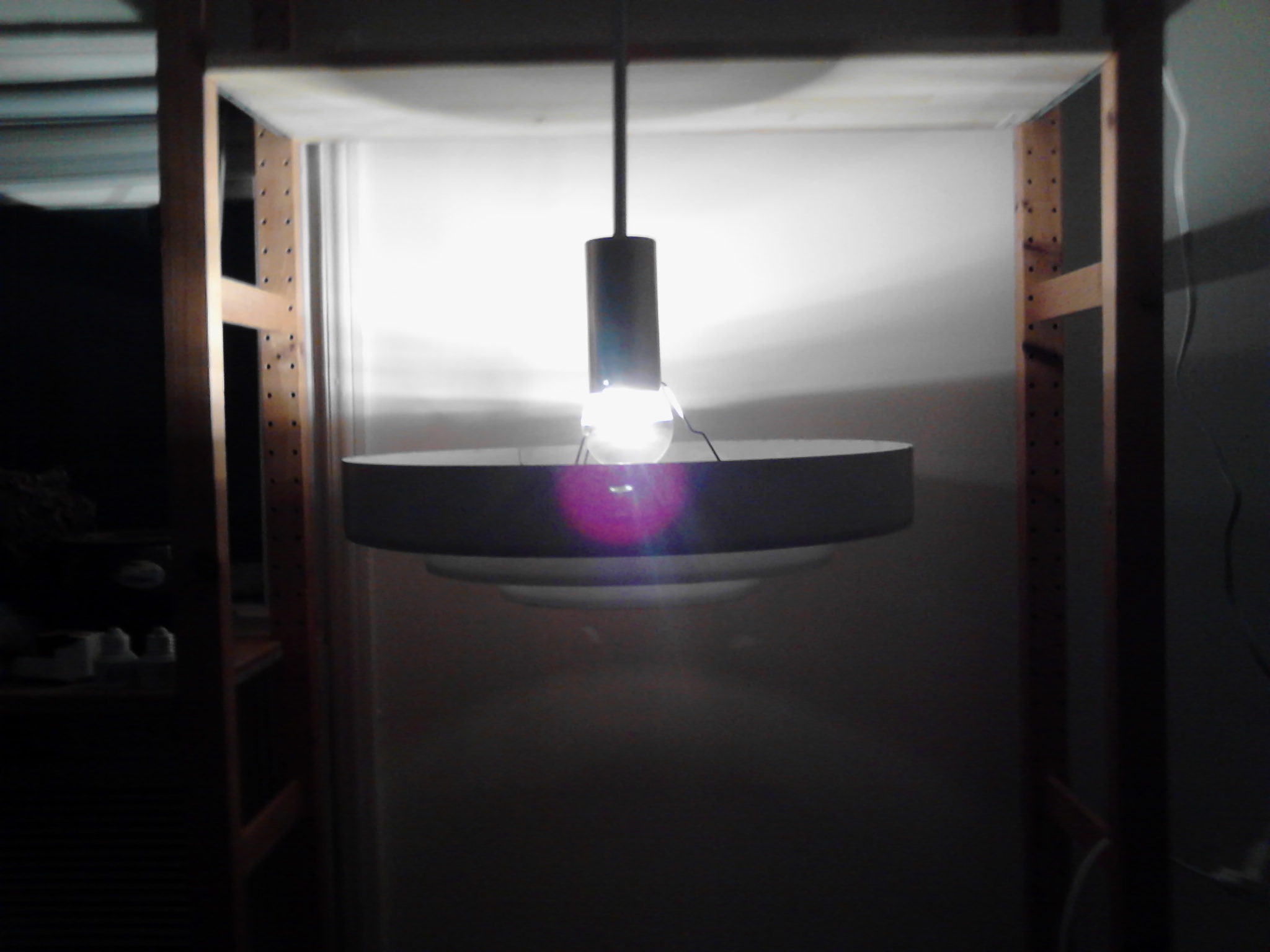
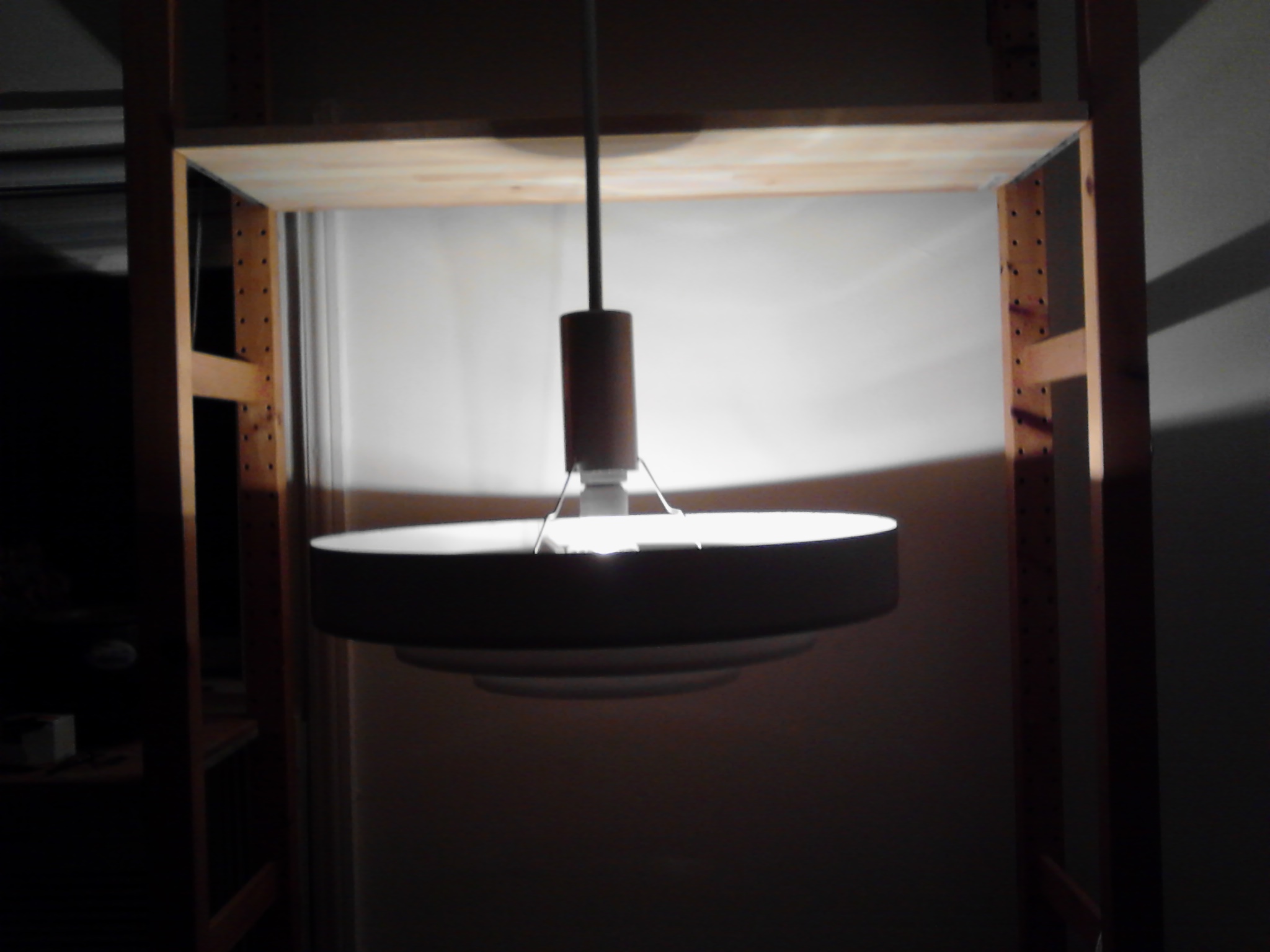
Side views without and with additional extensions. The shelf above simulates the height of the ceiling above if I shorten the stems to 6". That would put the lowest ring at 76" a.f.f. I may shorten them even more than that; still deciding. My camera lies when there is this much contrast: the single fixture illuminates my modest living room to a reasonable level, two should be bright enough for entertaining. A third one will go in the adjoining dining room. This arrangement will align all three fixtures with each other and windows and doors as three corners of a square. The fourth corner is the porch light which is also spherical: I love it when a plan comes together.
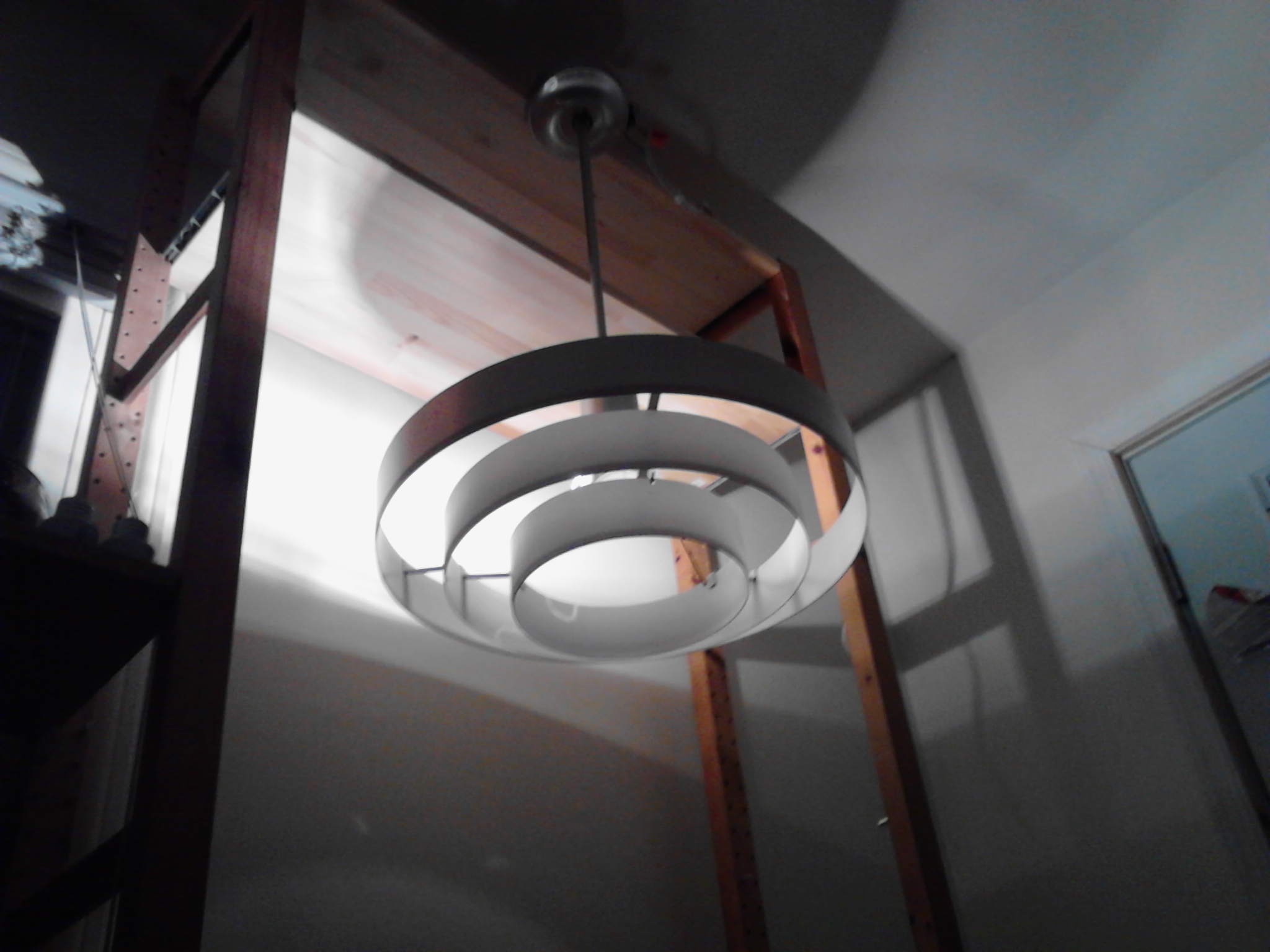
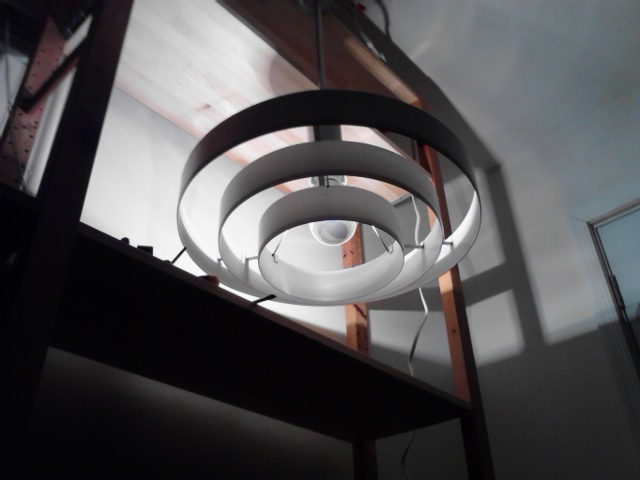
Views from beneath without and with additional extensions. My memory of these fixtures is that you could see the silvered lamp even from an oblique angle, so I'm going with the additional extensions, or one long one. In the left photogtaph you also see the escutcheon plate for the ceiling mount. It has a 1" sphere for a gimbal, so it could be mounted on a cathedral ceiling.
Shortening the stems will be a destructive procedure not easily undone. I thought about putting the original parts in storage and making a replacement stem and escutcheon out of new parts but decided that the best look was to use all original parts and anybody down the road who wants to restore it back to the long stem can find some tubing and a welder.
OOPS! I forgot the conical reflector that goes above the rings. It doesn't actually have much of an effect on the light pattern: With the socket extensions it is almost perfectly paralell to the lamp's rays, without them it duplicates the effect of the lamp's silvering. You'll see them in the installed pictures anyway, though.
Comments? e-mail to arturner@well.sf.ca.us
BACK to Alan Turner's home page.